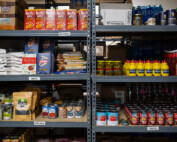It can be easy to get lost in all the numbers and statistics of the impact food insecurity has on communities here in central and southeastern Indiana and across the U.S. But it’s important to recognize the people behind those statistics.
Feeding America’s 2024 Elevating Voices: Insights Report highlights food insecurity from the real experts on the issue – people facing hunger. These neighbors shared their firsthand experiences to illustrate what we know to be true: We must come together with community-based solutions to find the path forward in the movement to end hunger.
These neighbors outlined several key areas of focus when it comes to finding solutions:
Prioritizing dignity
People shouldn’t be shamed for using the charitable food system. Neighbors value these resources and advocate for removing the red tape and expanding eligibility for federal programs that give them choices for how to support their families.
“While receiving EBT, we still make an effort to get the most out of the funds by taking advantage of sales, discounts, etc.”
Expanding opportunity
Food insecurity does not happen in a vacuum. It’s fueled by other conditions like low wages, the high cost of renting or buying a home, and rising food costs. Neighbors are urging lawmakers to promote economic stability and mobility.
“I receive SNAP assistance, yet it doesn’t come close to covering my food expenses, which means I have to use some of my disability pay towards food, but I don’t buy the healthiest of food because I don’t have enough money for that.”
Improving health
More than 90% of neighbors agree: food is medicine. Most report wanting to eat healthier but being unable to afford it. And it’s not just physical health. 82% of neighbors are concerned about the impact food insecurity has on their mental health.
“I don’t know where my life is headed and unsure of being able to continue to have a place to live and the ability to cover medical expenses.”
Increasing access
Everyone needs nutritious food to thrive, but access to healthy foods continues to be more challenging for those facing geographic and racial disparities. Nearly 90% of neighbors agree policies that restrict affordable food access are wrong and say food banks should receive more resources so they can serve more people.
“Not being able to buy enough food; the food I do buy is lower quality, and I have to drive further to buy it.”
To see the full report, click here.






